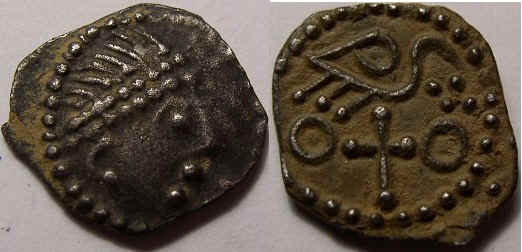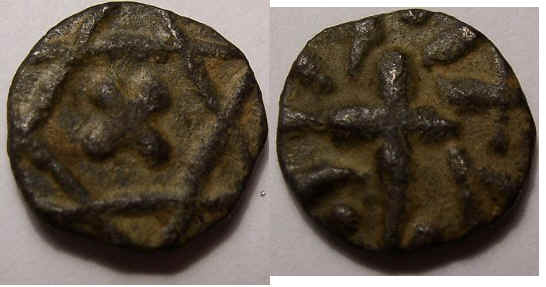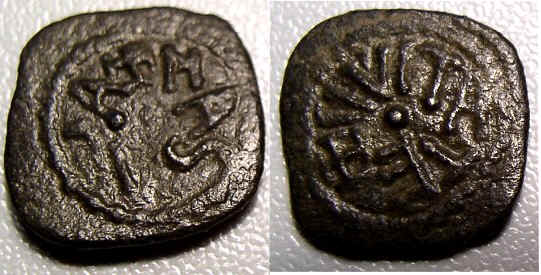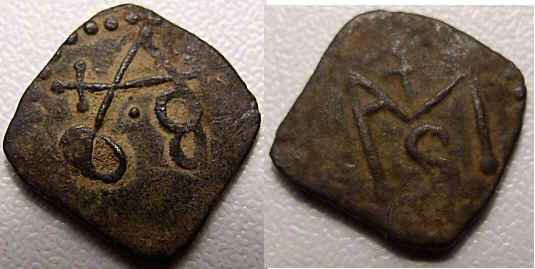
Zilveren sceat B serie (of J) gestyleerd hoofd en vogel op kruis 680-725
An Anglo-Saxon sceat. Can be the 'primary form" or
the Mercian type (seaby coins of England no 784
and 791, 19 edition or see the article of Philip Hill in the Britisch
Numismatic Journal 1953 plate III 26 - 27). London or York. It might be
struck copying a Celtic predecor (See the book of W. op den Velde).

sceat Star of David
The Anglians actually came from the region still called Anglen in northern Germany (Schleswig). However, their settlements may have extended also into what is now Denmark. The Saxons came, as you said from northern Germany (modern Hostein and Lower Saxony).
Sceats (or better Sceattas) are mainly found in England and Frisia, but important hoards were also uncovered in Denmark (Ribe) and Germany.


Clearly a Merovingian
denier. The mongram letters on the
reverse seem to show at least MAS, of if you count every stroke you
can form MASSILIA and the coin was like struck locally in Marseille.
Argent/Silver 11m 1,2g, I found 7 units of coin C, exactly the same.